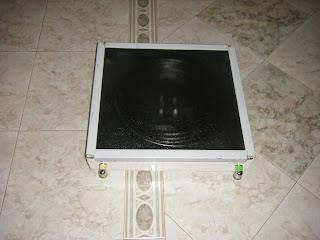Central Inverter vs. Micro-Inverter
I'm writing this post because some time ago a relative of mine requested a quote from a local RE supplier and this company recommended that he should install the panels using micro-inverters. The supplier remarked that 'this is the new way of installing panels.' WHAT? True, the technology may be newer than central inverters but that doesn't mean that the central inverters installation is a thing of the past or that micro-inverters are better than central inverters. Both installation types have their pluses and minuses as I'll detail below.
The price for the whole system using micro-inverters went up quite a bit! The strange thing is that the quote was issued after a site visit and it was confirmed that there are NO SHADING issues. So why use micro inverters when shading is not an issue?
Well, quite difficult to answer on behalf of the supplier; however I would like to make these observations.
1) If all panels are facing the same South direction, then one
MPPT controller would be enough. Why spend money to purchase an
MPPT controller for each panel? Agreed that although the panels would all be rated the same (Power, Voltage, Current), their performance (including their internal resistance) may vary between them, BUT by how much? I don't think that mismatch in panels is an issue in this case simply because most probably the panels would have come from the same manufacturer/batch. Normally the panels may vary +- by a small percentage and that's all, nothing to bother with regards to their overall performance.
2) If not all panels are facing the same direction, but maybe they are split in half, then there are central inverters with 2 or 3 MPPT controllers built in. These will facilitate the installation of the 2 or 3 sets of panels and therefore individual inverters are not needed.
3) If the panels are scattered on the roof all with different directions, then yes I agree that individual MPPT controllers will be needed to optimize the extracted energy from the panels.
4) If there are shading issues, i.e. during a long time of the day, several panels are covered, then again, individual MPPT controllers might be required.
5) Although Micro-inverters are being offered with a longer warranty, I'm still very suspicious about it. Both type of inverters are built from electronic components and both inverters will be placed on the roof next to the panels. The difference is that the Micro-Inverters are placed under the panels while the central inverter can be better positioned in a much cooler location. Electronic components last longer when working in a cool temperature. Therefore a central inverter, due to its better positioning. should last longer since its electronic components are working at a better 'relaxed' temperature.
6) Suppliers and Manufacturers are quoting a better yield from the system, between 5-20%.
Let's take an example here - a 2KW system consisting of 9 panels at 230W each (my actual installation size).
In this case, a 5% increase means we're talking of an extra 103W (equivalent to half a panel.)
In the case of a 20% increase, we're talking of an extra 414W (equivalent to an extra 2 panels). I'm quite susceptible to the 20% increase, however we'll include it also in the comparisons.
In my opinion, if there are no shading issues as mentioned above, and there is more space on the roof, I'd prefer to add an extra panel or two to make up for the decreased efficiency (which is claimed) than adding the micro-inverters. A panel comes with a 25-year warranty and from my experience, they do stick with their warranty claims. I own a couple of 10 year old panels and they still produce power as new.
7) Another issue which is mentioned with regards Central Inverter vs. Micro-Inverter is that micro-inverters are more scalable than Central inverters. If you want to increase the size of the system, it will be just a matter of adding more panels together with their micro inverters. This is a good point, however on installing the system, the central inverter can be purchased to support more panels from day. Thus it will be just a matter of adding the panels once the upgrade is performed. In this case, the upgrade will be cheaper because only the panels will need to be purchased albeit a higher initial cost of the larger central inverter. The upgrade is something which is considered from day 1 due to roof space and panels' location and it's not something which is dreamed of! Therefore the central inverter can be sized accordingly from day 1 to accommodate any upgrade which will happen in the future.
8) Central inverters can be considered as a Single point of failure. Although this is true, in my opinion it still does not justify the use of micro-inverters. A central inverter can be easily replaced since it would have been installed in a better location while micro inverters are all located under the panels. Accessibility of these micro inverters may be a problem to locate.
9) Central inverters come with a standard 5-7 year warranty which can be extended to 10-12 years while micro inverters come with a 20-25 year warranty. Well, I still have to see a micro inverter which has been on the field for 20 years! These warranty claims are based on laboratory tests and predictions while central inverters have been in the field from the time that grid-tie systems have started to mushroom across the world.
To conclude, I always follow the K.I.S.S. (Keep it Simple Stupid) principle. Why add all those electronic devices when they may be not needed (no shading and same orientation)? I think that only time will prove which is the best and therefore, most reliable technology. The central inverters already proved themselves, so we'll just have to wait for the micro-inverters to prove themselves...






